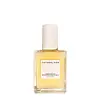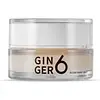What's inside
What's inside
 Key Ingredients
Key Ingredients

 Benefits
Benefits

 Concerns
Concerns

No concerns
 Ingredients Side-by-side
Ingredients Side-by-side

Water
Skin ConditioningSqualane
EmollientGlycerin
HumectantGalactomyces Ferment Filtrate
HumectantCentella Asiatica Leaf Extract
Skin ConditioningCynanchum Atratum Extract
Skin ConditioningVitis Vinifera Seed Oil
EmollientSodium Acrylates/Beheneth-25 Methacrylate Crosspolymer
Skin ConditioningAllantoin
Skin ConditioningPrunus Avium Seed Oil
EmollientPhenoxyethanol
PreservativeHydrogenated Polydecene
EmollientHydroxydecyl Ubiquinone
AntioxidantSodium Polyacrylate Starch
AbsorbentLauryl Glucoside
CleansingEthylhexylglycerin
Skin ConditioningSodium Hyaluronate
HumectantHydrolyzed Royal Jelly Protein
Skin ConditioningCeramide EOP
Skin ConditioningCeramide Ns
Skin ConditioningCeramide NP
Skin ConditioningCeramide As
Skin ConditioningCeramide AP
Skin ConditioningBeta-Glucan
Skin ConditioningHydrogenated Lecithin
EmulsifyingCholesterol
EmollientGlyceryl Stearate
Emollient2,3-Butanediol
HumectantWater, Squalane, Glycerin, Galactomyces Ferment Filtrate, Centella Asiatica Leaf Extract, Cynanchum Atratum Extract, Vitis Vinifera Seed Oil, Sodium Acrylates/Beheneth-25 Methacrylate Crosspolymer, Allantoin, Prunus Avium Seed Oil, Phenoxyethanol, Hydrogenated Polydecene, Hydroxydecyl Ubiquinone, Sodium Polyacrylate Starch, Lauryl Glucoside, Ethylhexylglycerin, Sodium Hyaluronate, Hydrolyzed Royal Jelly Protein, Ceramide EOP, Ceramide Ns, Ceramide NP, Ceramide As, Ceramide AP, Beta-Glucan, Hydrogenated Lecithin, Cholesterol, Glyceryl Stearate, 2,3-Butanediol
Zingiber Officinale Root Extract
MaskingGlycerin
HumectantGlycereth-26
HumectantButylene Glycol
HumectantNiacinamide
SmoothingDipentaerythrityl Pentaisononanoate
Emollient1,2-Hexanediol
Skin ConditioningDimethicone/Vinyl Dimethicone Crosspolymer
Skin ConditioningTrehalose
HumectantCarbomer
Emulsion StabilisingTromethamine
BufferingAmmonium Acryloyldimethyltaurate/Vp Copolymer
Sodium Acrylate/Sodium Acryloyldimethyl Taurate Copolymer
Emulsion StabilisingCaprylic/Capric Triglyceride
MaskingDipropylene Glycol
HumectantCetyl Ethylhexanoate
EmollientEthylhexyl Palmitate
EmollientEthylhexylglycerin
Skin ConditioningParfum
MaskingC12-14 Pareth-12
EmulsifyingPropanediol
SolventAdenosine
Skin ConditioningDisodium EDTA
Sodium Hyaluronate
HumectantTocopherol
AntioxidantHydrogenated Lecithin
EmulsifyingSorbitan Oleate
EmulsifyingCaprylyl/Capryl Glucoside
CleansingCentella Asiatica Extract
CleansingPentylene Glycol
Skin ConditioningCamellia Japonica Flower Extract
EmollientPolygonum Cuspidatum Root Extract
AntioxidantScutellaria Baicalensis Root Extract
AstringentCaprylyl Glycol
EmollientHydroxyacetophenone
AntioxidantGlycyrrhiza Uralensis Root Extract
Skin ConditioningHydrolyzed Sodium Hyaluronate
Skin ConditioningPotassium Hyaluronate
Skin ConditioningCamellia Sinensis Leaf Extract
AntimicrobialHyaluronic Acid
HumectantHydroxypropyltrimonium Hyaluronate
Hydrolyzed Hyaluronic Acid
HumectantRosmarinus Officinalis Leaf Extract
AntimicrobialChamomilla Recutita Flower Extract
MaskingSodium Hyaluronate Crosspolymer
HumectantSodium Acetylated Hyaluronate
HumectantPalmitoyl Tripeptide-1
Skin ConditioningPalmitoyl Tetrapeptide-7
Skin ConditioningAcetyl Tetrapeptide-2
Skin ConditioningHexapeptide-9
Skin ConditioningNonapeptide-1
Skin ConditioningPalmitoyl Pentapeptide-4
Skin ConditioningPalmitoyl Tripeptide-5
Skin ConditioningCopper Tripeptide-1
Skin ConditioningTripeptide-1
Skin ConditioningAcetyl Hexapeptide-8
HumectantPalmitoyl Oligopeptide
CleansingZingiber Officinale Root Extract, Glycerin, Glycereth-26, Butylene Glycol, Niacinamide, Dipentaerythrityl Pentaisononanoate, 1,2-Hexanediol, Dimethicone/Vinyl Dimethicone Crosspolymer, Trehalose, Carbomer, Tromethamine, Ammonium Acryloyldimethyltaurate/Vp Copolymer, Sodium Acrylate/Sodium Acryloyldimethyl Taurate Copolymer, Caprylic/Capric Triglyceride, Dipropylene Glycol, Cetyl Ethylhexanoate, Ethylhexyl Palmitate, Ethylhexylglycerin, Parfum, C12-14 Pareth-12, Propanediol, Adenosine, Disodium EDTA, Sodium Hyaluronate, Tocopherol, Hydrogenated Lecithin, Sorbitan Oleate, Caprylyl/Capryl Glucoside, Centella Asiatica Extract, Pentylene Glycol, Camellia Japonica Flower Extract, Polygonum Cuspidatum Root Extract, Scutellaria Baicalensis Root Extract, Caprylyl Glycol, Hydroxyacetophenone, Glycyrrhiza Uralensis Root Extract, Hydrolyzed Sodium Hyaluronate, Potassium Hyaluronate, Camellia Sinensis Leaf Extract, Hyaluronic Acid, Hydroxypropyltrimonium Hyaluronate, Hydrolyzed Hyaluronic Acid, Rosmarinus Officinalis Leaf Extract, Chamomilla Recutita Flower Extract, Sodium Hyaluronate Crosspolymer, Sodium Acetylated Hyaluronate, Palmitoyl Tripeptide-1, Palmitoyl Tetrapeptide-7, Acetyl Tetrapeptide-2, Hexapeptide-9, Nonapeptide-1, Palmitoyl Pentapeptide-4, Palmitoyl Tripeptide-5, Copper Tripeptide-1, Tripeptide-1, Acetyl Hexapeptide-8, Palmitoyl Oligopeptide
 Reviews
Reviews

Ingredients Explained
These ingredients are found in both products.
Ingredients higher up in an ingredient list are typically present in a larger amount.
Ethylhexylglycerin (we can't pronounce this either) is commonly used as a preservative and skin softener. It is derived from glyceryl.
You might see Ethylhexylglycerin often paired with other preservatives such as phenoxyethanol. Ethylhexylglycerin has been found to increase the effectiveness of these other preservatives.
Glycerin is already naturally found in your skin. It helps moisturize and protect your skin.
A study from 2016 found glycerin to be more effective as a humectant than AHAs and hyaluronic acid.
As a humectant, it helps the skin stay hydrated by pulling moisture to your skin. The low molecular weight of glycerin allows it to pull moisture into the deeper layers of your skin.
Hydrated skin improves your skin barrier; Your skin barrier helps protect against irritants and bacteria.
Glycerin has also been found to have antimicrobial and antiviral properties. Due to these properties, glycerin is often used in wound and burn treatments.
In cosmetics, glycerin is usually derived from plants such as soybean or palm. However, it can also be sourced from animals, such as tallow or animal fat.
This ingredient is organic, colorless, odorless, and non-toxic.
Glycerin is the name for this ingredient in American English. British English uses Glycerol/Glycerine.
Learn more about GlycerinHydrogenated Lecithin is created from the hydrogenation of lecithin (a group of phospholipids). Hydrogenation is a chemical reaction between hydrogen and another element.
This ingredient is an emollient and emulsifier. As an emollient, it helps soften skin by trapping moisture within. As an emulsifier, it prevents oil and water ingredients from separating.
Sodium Hyaluronate is hyaluronic acid's salt form. It is commonly derived from the sodium salt of hyaluronic acid.
Like hyaluronic acid, it is great at holding water and acts as a humectant. This makes it a great skin hydrating ingredient.
Sodium Hyaluronate is naturally occurring in our bodies and is mostly found in eye fluid and joints.
These are some other common types of Hyaluronic Acid:
Learn more about Sodium Hyaluronate